5 Fire-wise Landscaping Ideas for Utah
BY ABDUL WADOOD | MAY 15TH, 2023 | LAWN CARE, UTAHWildfires love dry weather, which is why Utah, with its arid climate, is highly prone to wildfire. In fact, it’s among the most dangerous states for wildfires in the U.S. But you can minimize the damage by adopting these fire-wise landscaping ideas for your Utah home.
In this article:
- Prepare Your Defensible Space
- Use Metal or Stone Structures
- Grow Fire-Resistant Plants
- Apply Fire-Resistant Mulch
- Build Hardscapes
1. Prepare Your Defensible Space
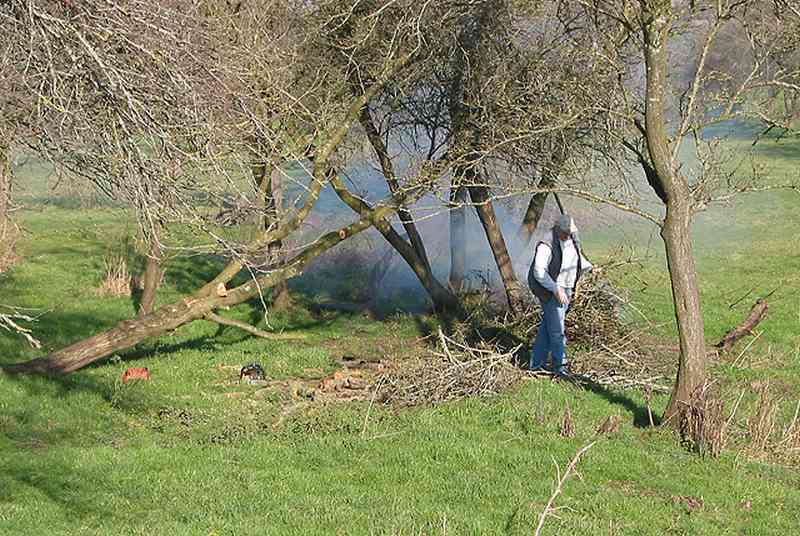
Photo Credit: Pauline Eccles / Wikimedia Commons / CC BY-SA 2.0
Defensible space is the buffer between your home and the vegetation around it. By keeping this area clear of flammable vegetation and objects, you rob the fire of the fuel it needs to maintain its destructive march.
If your home doesn’t have a defensible space, it most likely won’t survive the fire, and the flames may spread quickly to your neighbor’s property as well. The secondary benefits of defensible space is that it can create a safe zone for firefighters to battle a blaze without endangering their lives.
An effective defensible space consists of three zones:
Zone 1 (Immediate Zone)
Zone 1 extends up to 5 feet from your home. If you live on a hill, increase the distance by 5 feet or more because fire travels faster uphill.
Here is how to prepare this zone.
- Remove dried leaves, dead branches, and pine needles from your roof, gutters, and decks.
- You may grow fire-resistant plants within this zone, but trim and water them regularly.
- Trees are highly flammable. So, transplant any trees within this zone to another place.
- Don’t store firewood or any combustible materials here.
- Check your windows and roof for damage. If they are damaged, repair them to avoid ember penetration.
- Replace organic mulch with stone, gravel, and pavers.
- Replace wooden gates and fences with metal or other non-combustible materials.
Zone 2 (Intermediate Zone)
Zone 2 begins where the first zone ends. It extends from 6 feet up to 30 feet. Here are some guidelines for this zone.
- Remove diseased (dying) trees. Diseased trees tend to ignite quicker as they are drier.
- Prefer deciduous over coniferous trees.
- Ensure there’s at least 10 feet distance between adjacent trees.
- Vegetation around propane tanks is a strict no. So, if you have a propane tank within this zone, clear all vegetation around it.
- Prune trees up to 10 feet from the ground. Ensure a tree’s branch doesn’t exceed 1/3 of its height.
- The grass should be shorter than 4 inches. Also, water them regularly. Dry grass will catch fire easily.
- Construct patios and walkways between grass and plants as they can block fire spread.
Zone 3 (Extended Zone)
Zone 3 extends from 31 feet up to 100 feet or the property line. Here are the guidelines for this zone.
- Remove dead trees and plants. Generally, the more trees you remove, the better chance of your home surviving the wildfire.
- You can grow grass much longer in this zone, but water it regularly.
- Trim trees.
- Remove debris and other dry vegetation.
2. Use Metal or Stone Structures
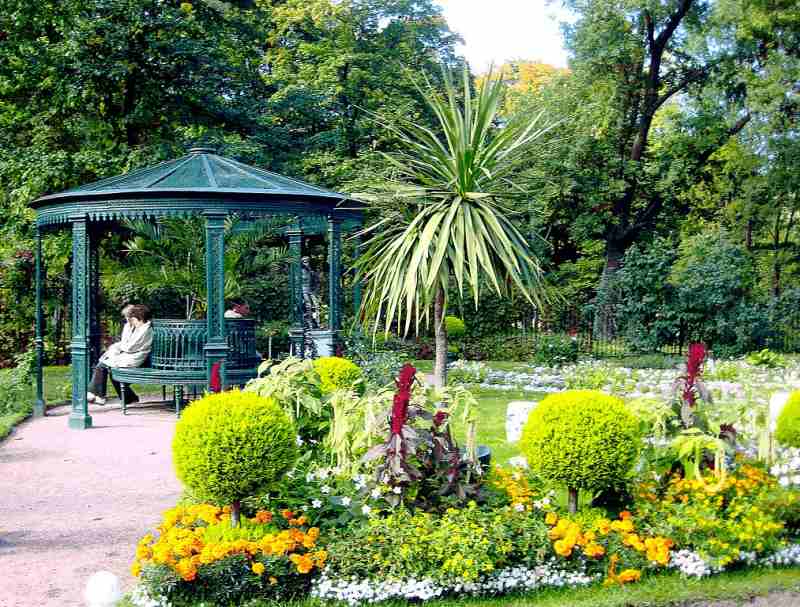
Photo Credit: GAlexandrova / Wikimedia Commons / CC BY-SA 4.0
Wooden fences and gazebos look great, and many homeowners across the U.S. prefer them. But they are highly flammable and can quickly spread fire. So, wood shouldn’t be your first choice in Utah.
Metal and stone structures are a fire-resistant alternative to wood. They look great, are more durable, and require less maintenance.
3. Grow Fire-Resistant Plants
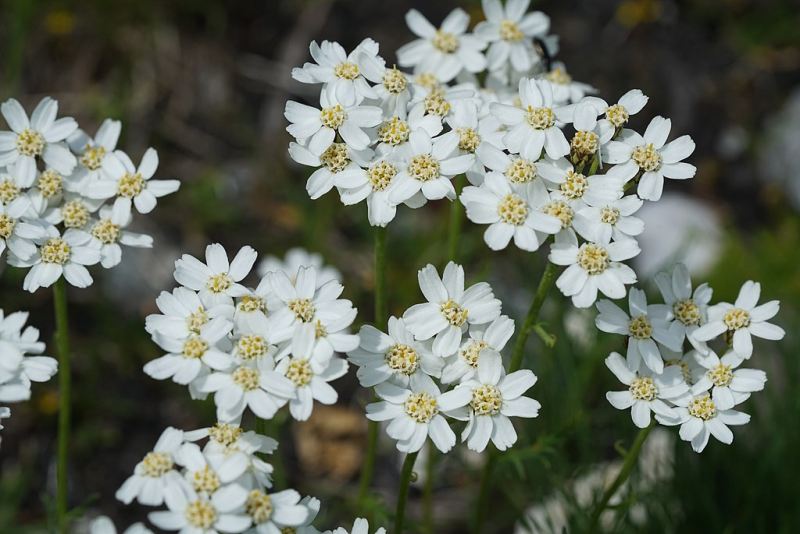
Photo Credit: PicturElements / Wikimedia Commons / CC BY-SA 4.0
The term “fire-resistant plants” is a bit of a misnomer. All plants will burn when exposed to fire. However, fire-resistant plants won’t ignite as violently.
A fire-resistant plant:
- Contains low resin or sap content
- Holds moisture
- Grows close to the ground
- Has thick leaves and loose branches
- Has non-aromatic leaves
Here are some of the most fire-resistant plants for Utah.
- Silvery Yarrow (Achillea Clavennae)
- Sea Lavender (Limonium Latifolium)
- Alfalfa (Medicago Sativa)
- Ashy Cranesbill (Geranium Cinereum)
- Coral Bells (Heuchera Sanguinea)
Here are some tips for growing fire-resistant plants correctly.
- Ensure there’s enough space between plants to reduce fire spread. We recommend separating shrubs by at least twice their height and trees by at least 10 feet.
- Group plants in small clusters and not in masses.
- Remove fallen leaves and branches.
- Water the plants regularly.
Note: If you live on a hill, leave more space between plants as fire travels faster uphill.
| Slope Size | Tree Distance | Shrub Distance |
| Mild slope (less than 20%) | 10 feet | 2 times the shrub’s height |
| Moderate slope (20% to 40%) | 20 feet | 4 times the shrub’s height |
| Steep slope (greater than 40%) | 30 feet | 6 times the shrub’s height |
4. Apply Fire-Resistant Mulch
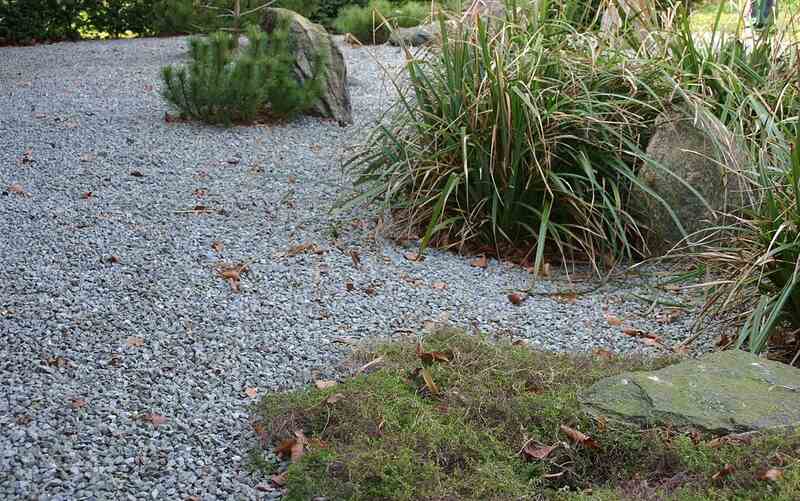
Photo Credit: Sten Porse / Wikimedia Commons / CC BY-SA 3.0
Mulch helps plants conserve water. It can also reduce weed growth. Weeds are highly flammable and can spread fire. But choosing the wrong mulch – meaning mulch that is highly flammable – actually aids the spread of fire.
Inorganic mulches like gravel, pebbles, and river rocks have great fire resistance. These mulches also look good and require little maintenance.
If you prefer organic mulches, we recommend wood chips as they are the least flammable, according to a study by the University of Nevada Cooperative Extension. That study indicates that composted wood chips are the least flammable mulches.
Here are some mulches to avoid, as they are combustible.
- Straw
- Shredded rubber
- Cedar bark
- Pine bark
- Pine needles
5. Build Hardscapes
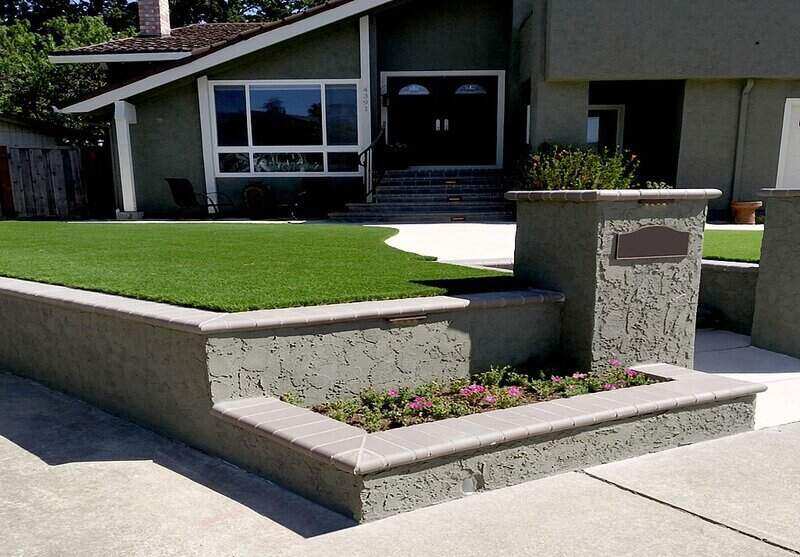
Photo Credit: James Easterday / Wikimedia Commons / CC BY-SA 4.0
Hardscapes are man-made features added to a landscape design. They increase the appearance of your lawn and can also slow the spread of fire. Hardscapes include:
- Retaining walls
- Fences
- Gazebos
- Patios
- Driveways
- Walkways
Use bricks, concrete, and metal for your hardscapes, but not wood. Here’s how hardscapes can help minimize fire spread.
- You can build retaining walls on a slope and grow plants in them. The plants will easily ignite if there’s no retaining wall as fire travels faster uphill.
- Building walkways and driveways blocks the fire from reaching grass and plants.
- Larger hardscapes like patios and gazebos create a fire-resistant zone around your property. Firefighters can use them to battle fire without putting their lives in danger.
The Final Word
Utah is hot, and it’s the second driest state in the U.S., making it highly prone to wildfires.
It’s impossible to prevent wildfires from erupting, but you can minimize the damage by creating a defensible space, using metal structures, growing fire-resistant plants, applying fire-resistant mulch, and building hardscapes.
Wildfires spread rapidly, and a single fire-resistant landscape can’t slow the spread. If you live in a community, involve your neighbors and encourage them to create a fire-resistant landscape too.
If you want some help creating your lawn fire-resistant, Wikilawn Utah lawn care experts can help. We can also help you with regular lawn maintenance.
Main Photo Credit: Devereaux House / Ken Lund / Flickr / CC BY-SA 2.0